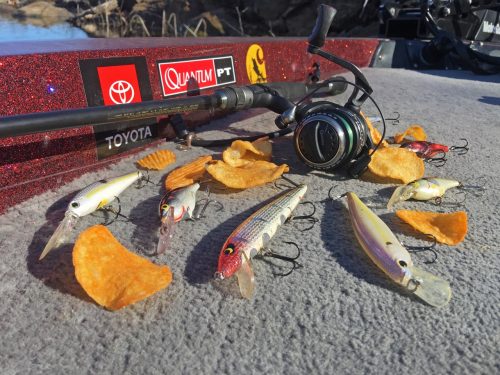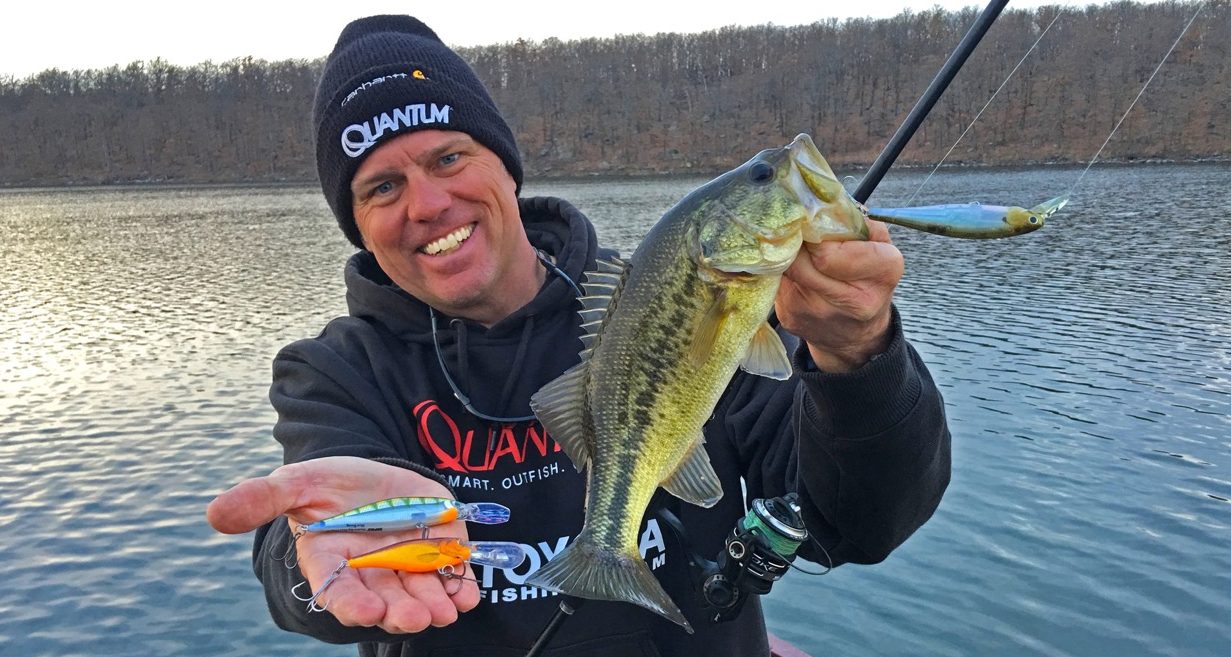Cast your cold water crankbaits with spinning tackle
Courtesy of Alan McGuckin / Dynamic Sponsorships
Bass fishing’s funniest man, Gerald Swindle, said it best on the Classic weigh-in stage a couple years ago. “I’m headed for a hot shower. I’ve been standing in a cold wind all day casting a Rapala Shad Rap, which is about like trying to cast a potato chip in a hurricane.”
If you know Swindle, you know that a Shad Rap might very well be his favorite cold water lure. But if you’ve ever tried to throw the legendary balsa bait, or a suspending jerkbait, on baitcasting equipment, especially when the wind is more than a whisper, you may find yourself cussing under your breath, or heck, possibly even out loud.
I’ve been there and done that more than I’d like to admit, and amid a recent bout of maddening backlash based frustration I flashed-back to 25 years ago, when I first learned to throw suspending jerkbaits for cold water bass – on spinning tackle.
Yes, believe it or not, the best anglers in the Ozark Mountain region who helped make these wintertime baits famous, used spinning tackle in nearly equal proportion to baitcasting equipment. And then, for whatever reason, spinning sticks and ‘egg beater’ reels seem to fall out of winter fashion.
And that’s unfortunate; because spinning tackle truly offers a multitude of performance-based reasons to be paired with your favorite cold-water treble hook laden lures.

Basic physics favor spinning tackle for lighter lures
With lighter lures like a Shad Rap, it’s tough to generate enough momentum on a baitcasting reel’s spool to spin sufficiently. So in turn, the friction slows the lure’s launch through the air. And by the time the spool finally does get up to speed, the momentum in the lure is too low, and the result is often a backlash.
Longer casts, and fewer backlashes
The positive result of pairing lighter balsa baits and jerkbaits with spinning tackle is simple, you’ll get far fewer backlashes, plus, much longer casts. And longer casts help increase your catching success, not only by allowing these diving lures to stay in the strike zone longer, but also to spook fish less in the clear cold waters where these visually oriented lures work best.
Upsize your spinning reels
Size 25 and 30 are the most popular spinning reel sizes for bass anglers, but legendary pros like Kevin VanDam nearly always use a size 40 spinning reel.
Why? Back to that physics class we spoke of a minute ago. Larger spools provide even less friction as the line leaves during the cast. Plus, you’re able to pick up more line with each turn of the handle during the retrieve while fighting that 5-pounder.
Fully capable of fighting big fish
Finally, speaking of 5-pounders, don’t ever believe you can’t fight big fish on spinning tackle. As proof, Bass Fishing Hall of Fame member Shaw Grigsby has lost count of the bass over 5-pounds he’s landed on spinning tackle, and the number of freight train tugging smallmouth caught on spinning tackle annually is staggering.
The key is to make sure you’re using a quality reel with the drag set just loose enough to allow big fish some tugging room. Pair it with a 6’ 10” to 7’ medium action rod with plenty of tip. A rod of this length and action will provide added launch momentum on the cast, and necessary amounts of forgiveness, so as not to tear hooks free from the mouths of big fish.
Lastly, take your time and be patient during the fight, but by all means, don’t be afraid of spinning tackle. Instead, embrace its advantages. Spool up a size 30 or 40 reel with 8 or 10 pound line, tie it to your favorite cold water crankbait, and let ‘er rip, Tater Chip.


















Comments are closed.